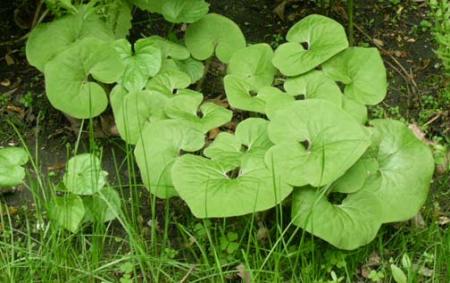Canadian wild ginger
Canadian Wild Ginger, Asarum canadense, is listed by the USDA as found throughout most of the eastern half of the US, and botanical records indicate it's native from Maine to Mississippi, although now vulnerable to habitat destruction in the central US. It has done well in regenerated deciduous woodlands, and I have seen it in natural settings in Wisconsin as well as in Chicago area forest preserves.
A hardy shade perennial that needs moisture, wild ginger has violet-like leaves on slightly fuzzy stems, and grows about 4" above the ground, forming a nice cover. Small deep yellow flowers appear in early spring on some plants, but most spreading occurs through the tubular roots. In masses, it's a good alternative to pachysandra, and looks beautiful as a low border in front of ferns. The roots do have a mild ginger aroma and flavor. While traditional Chinese medicine and some American folk remedies use the roots, studies reveal that Asarum contains aristocholic acid, a naturally occuring toxin linked to kidney and renal problems, so amateur ingestion is discouraged. The stems and flowers are not edible.

- Printer-friendly version
- Log in to post comments

